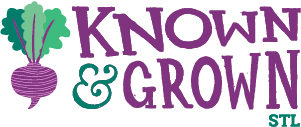Farmers in our program must adhere to all the required practices and are encouraged to use other environmentally responsible and ethical practices, listed below. To learn more, explore our animal criteria and crop criteria.
REQUIRED PRACTICES
No antibiotics used prophylactically or as a growth promotant. Antibiotics may only be used for therapeutic treatment.
No synthetic chemicals applied on crops or in pastures (unless required by a government-funded conservation program such as the Conservation Stewardship Program).
Animals live on outdoor pastures where they can forage for at least part of their diet. Shelter is allowed, particularly during winter months, as long as there is deep bedding to absorb nitrogen, preventing it from entering our waterways.
Animals are required to grow at a natural rate without the addition of synthetic growth promotants or added hormones. Synthetic growth promotants and added hormones impact animal welfare and the environment. When animals are forced to grow quickly, it puts stress on their bodies and forces them to have a less healthy, more sedentary life. Growth hormones are used to speed up production, especially in farms that concentrate animals in tight confined spaces – these CAFOs (Concentrated Animal Feeding Operations) have devastating environmental impacts on air, water, and soil.
Farms in close proximity to other farms that use synthetic chemicals must work to create adequate buffers to prevent drift from harmful chemicals.
Golden Beet

The Golden Beet is our designation for farms that go above and beyond the standards for joining Known & Grown STL.
Suggested Practices
Nutrient management plans are documents of record establishing how nutrients will be managed for plant production while addressing identified resource concerns including the offsite movement of nutrients. These plans are prepared in collaboration with producer and/or landowner and are designed to help the producer implement and maintain an effective plan for the application of nutrients from available sources.
Riparian herbaceous cover is establishment and maintenance of grasses, grass-like plants, and forbs that are tolerant of intermittent flooding or saturated soils and that are established or managed in the transitional zone between terrestrial and aquatic habitats.
A pollinator habitat enhancement plan is a site-specific conservation plan developed for a client that addresses the improvement, restoration, enhancement, or expansion of flower-rich habitat that supports native and/or managed pollinators.
A Livestock Exclusion System uses permanent or temporary fencing (board, barbed, high tensile, electric wire, or portable netting) installed to exclude livestock from streams and critical areas not intended for grazing to improve water quality. Benefits may include reduced soil erosion, sedimentation, pathogen contamination and pollution from dissolved, particulate, and sediment-attached substances.
A grazing management plan is a site specific conservation plan developed for a farmer which addresses one or more resource concerns on land where grazing related activities or practices will be planned and applied.
A water and sediment control basin, (WASCOB), is an earth embankment or a combination ridge and channel constructed across the slope of minor watercourses to form a sediment trap and water detention basin with a stable outlet.
Field borders are strips of permanent vegetation (grasses, legumes, forbs, or shrubs) established on one or more sides of a field.
Forage and biomass planting is used to establish adapted and/or compatible species, varieties, or cultivars of herbaceous species suitable for pasture, hay, or biomass production.
Emphasis is placed on the holistic development and interrelationships of the soil, plants and animals as a self-sustaining system.
Water conservation efforts such as drip irrigation prevents water waste by using a low-pressure system at ground level. This avoids water waste from evaporation that occurs when water is applied from above.
Integrated Pest Management (IPM) is an environmentally-sensitive approach to manage and prevent pests which prioritizes biological and cultural solutions prior to the use of synthetic chemicals. Some farms use predators, like bats, to manage their pest populations. Others use other beneficial insects (that eat or parasitize harmful insects), or plants such as marigolds that naturally repel pests, or walk their rows and pick bugs by hand.
According to the EPA’s Office of Pesticide Programs, “Biopesticides are certain types of pesticides derived from such natural materials as animals, plants, bacteria, and certain minerals. Biopesticides are usually inherently less toxic than conventional pesticides.”
Animals should have access to the foods they evolved to eat, including grass and insects. If grass and insects found in pasture are not sufficient (due to cold weather, for example), then feed should ideally be non-GMO and/or Certified Organic.
Energy conservation efforts such as alternative energy sources and low-energy input systems help reduce overall carbon footprint.
Controlling water and sediment runoff improves water quality by reducing excess nutrients and harmful pathogens that pollute or waterways while maintaining soil structure.
Collection of water during rain events protects against erosion and allows for no-irrigation or low-irrigation systems to access water during drier periods.
Animals should source the majority of their nutrients from pastures with supplementation using organic or non-gmo grains.



